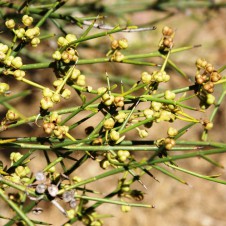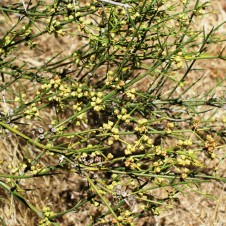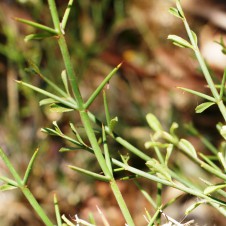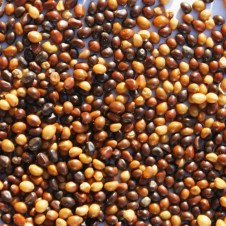General Description: A rigid, spiny shrub, to 2.5 m tall, usually leafless after flowering, with clusters of 10-50 small, white flowers at the base of spines. Spines are rigid and are up to 50 mm long.
Flowers and Fruit: Flowers are white and are about 3 mm wide with 4-5 Sepals. Flowers from December to February. The fruit is three-lobed and 3-5 mm in diameter, each pod contains one to three ovoid brown/black seeds. These are expelled explosively from the capsules upon drying.
Conservation: [f] Listed under the Victorian Flora and Fauna Guarantee. [r] Rare in Victoria.
Site Preference and Tolerances: A range of woodlands and forests, usually in rocky, high rainfall areas. Intolerant of any prolonged inundation. The Australian Anchor Plant usually occurs in grassy open woodlands and forests in the east of Victoria growing in topsoil composed of sandy clay loam.
Life Span: Slow growing and long lived (known to have survived for over 30 years in the wild). It is possible that some very old specimens could have rootstocks and trunks well over 100 years old but with much younger stems.
Wildlife Value: Eaten by marsupials such as kangaroos, wallabies and possums. Plants sometimes flower prolifically in spring and are highly fragrant and thought to be very attractive to native bees.
Other Values and Uses: Australian Anchor Plant can resprout (regrow above ground parts after their removal by disturbance, eg, fire)
Other Scientific Names: Colletia pubescens, Discaria australis
Other Common Names: Hairy Anchor Plant, Thorn-bush
Germination Information: Experiments have shown that the best germination was achieved with fresh seed soaked in water at room temperature for 1 hour, then cold-moist treated in a refrigerator at 4-8 C for a lengthy period of 30 to 90 days with 60 to 90 being optimal.




